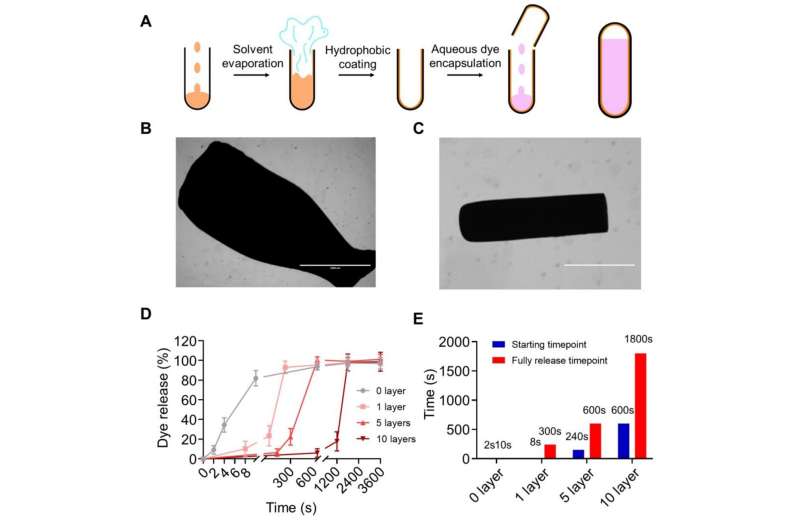December 5, 2022 report
Using a green algae capsule to deliver chemotherapeutic drugs to a mouse via the GI tract

A team of researchers at the University of California, San Diego, has developed a green algae capsule for delivering chemotherapy drugs to the gastrointestinal (GI) tract. In their study, published in the journal Science Robotics, the group delivered drugs via the capsule, which passed through the stomach without being digested.
Getting drugs to specific targets in the human body is a difficult task, in part because the body attacks foreign substances. The task is made doubly hard in the gastrointestinal track because the drugs must be able to withstand the strong acids that break down food as part of the digestive process. In this new effort, the researchers tested the possibility of using green algae capsules to deliver drugs to the GI tracts of mice.
Green algae was chosen because it has already been tested as an ingredient for supplements and found to not have any negative side effects. Another advantage is that algae can propel themselves forward through a liquid using hairlike appendages as flippers. In this new effort, the researchers attached nanoparticles filled with anti-cancer drugs to the surface of the algae using click chemistry. They then covered the results with white blood cell membranes to prevent the body's immune system from attacking.
The researchers then fed a capsule to a test mouse and monitored it as it made its way down the throat, into the stomach and then into the intestines. The nanoparticles dissolved in the small intestine, releasing the therapy drugs, just as they were designed to do. Multiple sessions showed that the drugs were delivered evenly and did not lead to adverse effects in other organs.
The researchers also found that the capsule was capable of keeping the algae alive in the GI tract for up to 12 hours and that the capsules could swim as fast as 120 micrometers per second—much faster than sperm cells, which have also been tested as a means of delivering therapeutic drugs.
The researchers tested the same design using algae capsules to deliver insulin directly to the gut and found equally impressive results. They next plan to set up a clinical trial to find out if the capsules will work as well in human patients.
More information: Fangyu Zhang et al, Gastrointestinal tract drug delivery using algae motors embedded in a degradable capsule, Science Robotics (2022). DOI: 10.1126/scirobotics.abo4160
Journal information: Science Robotics
© 2022 Science X Network





















